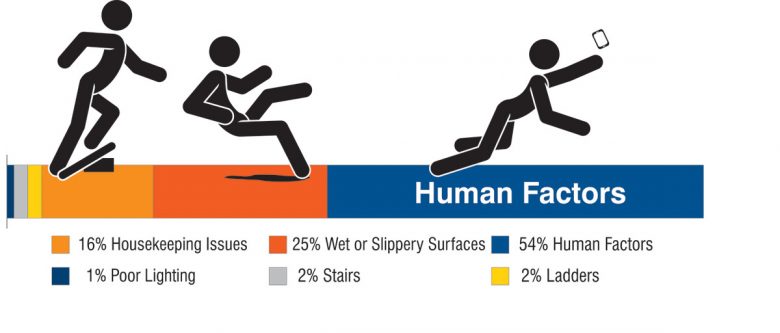This is an excerpt from our free guide on preventing slips, trips and falls.
A 2014 survey of 1,294 safety professionals revealed the most frequent factors in slip, trip and fall incidents at their workplaces—and a whopping 95% of respondents cited one of three causes.
The main characteristic the three biggest causes have in common is they’re the result of the errors or errors in judgement that people make every day, like how tidy to keep their work area, whether to report a wet surface or debris that could be a trip hazard, how fast to walk, and whether to move blindly around corners. People tend to perceive these hazards (and especially human factors) as being a lot less risky than they actually are, which makes it challenging to find effective and permanent solutions.
Because these factors require constant attention, they can be avoided entirely (or made worse) by employees’ mental states throughout the day.
One step at a time
Most safety programs focus on the physical hazards of slips, trips and falls, like the conditions of commonly used areas such as a well-traveled walking surface, stairway or ladder. Fall hazards should always be your first priority, but you can’t eliminate injuries caused by slips, trips and falls by only dealing with physical factors.
The truth is that many slips, trips and falls are caused or made worse by a person’s state of mind. When we’re rushing, frustrated, tired or complacent we tend to make errors and decisions that increase the chance of injury.

Nobody chooses to slip and fall. But no matter how effective the rest of your safety program is, your employees have a higher risk of injury due to a slip, trip or fall when they’re in one of these four states.
If you’ve done everything you can to minimize physicals hazards, your next step in preventing slips, trips and falls is clear: you need to address human factors.
Discover how to address human factors in your slips, trips and falls prevention efforts by downloading Solving Slips, Trips and Falls Once and For All: A guide to addressing the physical and human factors in slips, trips and falls for free.

